When you are driving in Japan, do you know what to do if there’s an earthquake or sudden heavy rain?
Here are some tips to keep in mind when driving in Japan in order to be prepared in case of a natural disaster.
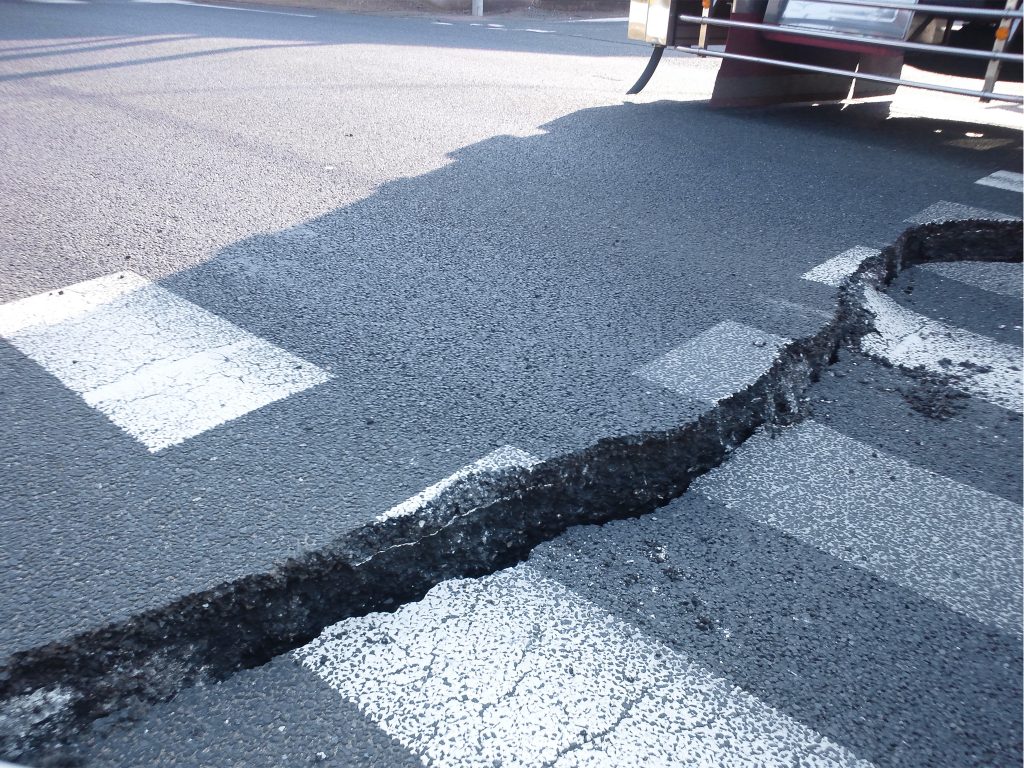
1. Earthquake
■ If an earthquake happens when you’re driving
If an earthquake starts while you’re driving, turn on the hazard/emergency lights and check the condition of nearby cars and pedestrians, then move your car to the shoulder and stop.
If you brake suddenly, you could get hit from behind, so gradually reduce your speed before stopping if possible.
Please wait in the car without getting out until the earthquake subsides, then check the earthquake information, damage, etc, from your mobile phone or app.
■ If you get out of the car and evacuate
If there is a tsunami warning issued or the road is damaged and you cannot continue, turn off the engine, close the windows, leave the car key in the ignition and do NOT lock the doors, and proceed to safety.
When you leave the key in the ignition, emergency personnel will be able to move the car if it’s blocking emergency vehicles.
■ When evacuating with the car
It’s very dangerous to move the car when there is an earthquake because there might be congestion, damage to the road, or debris blocking the way. Therefore, please stop the car in a safe place and walk to evacuate.
If there are no buildings nearby and you must evacuate by car, drive very carefully and pay close attention to road conditions because traffic lights and signals may no longer be operational due to power failures.
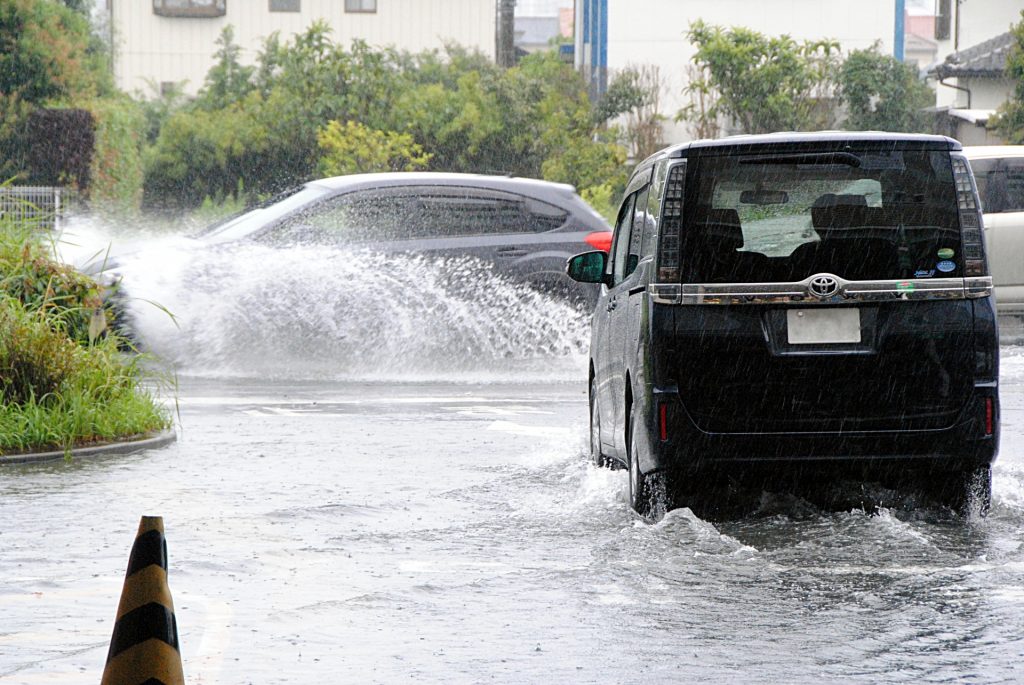
2. Sudden Heavy Rain
■ If you encounter heavy rain while driving
If it’s raining very hard, stop driving and park in a safe place and wait for the rain to stop.
■ Avoid underpasses
Underpasses are made by digging down from the surrounding road, such as underground roads passing under railways or highways.
During heavy rain, underpasses are dangerous because they can be easily flooded by several meters of water. During heavy rainfall, never attempt to drive into a flooded area.
■ “I think I can make it” driving is extremely dangerous
It’s extremely dangerous to think that you can drive through flooded roads, even if you think it’s shallow. Even a small amount of water can sweep away a car.
If you do drive into a flooded area, it’s possible that cars in front of you will become unable to move and the water level will increase, meaning that you will be stuck.
Avoid driving through any area that has standing water.
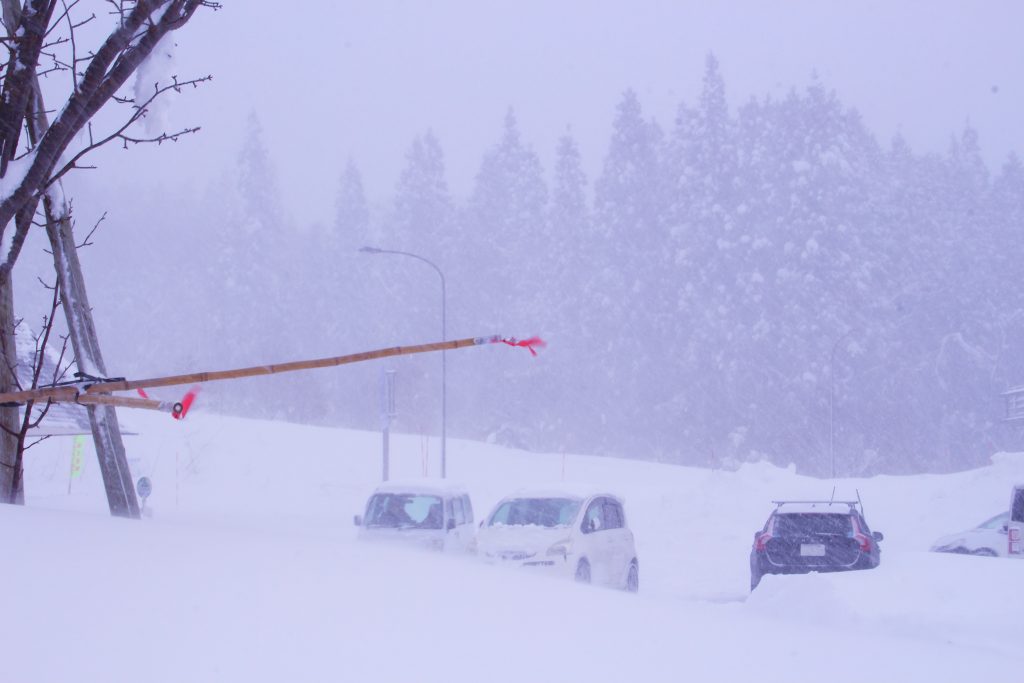
3. Heavy Snow
■ If you get stuck on a snow road
If your tires slip on fresh slow and you get stuck, slowly move the car back and forth to stiffen the snow around the tires.
If there’s a sand box on the side of the road, sprinkle some sand around the drive wheel.
■ If you can’t move because of heavy snow
In whiteout conditions such as snowstorms, please turn on the hazard/emergency lights and and safely stop the vehicle.
Since the exhaust pipe might become blocked by snow, there is a risk of carbon monoxide poisoning, so please remove the snow from the exhaust pipe while you’re waiting for assistance.
4. If Water Gets Into The Car
It’s important to stay calm even if the car engine stops in a flooded area and water gets into the car.
First, remove the seatbelt, open the door, and evacuate. If the water is too high and the door won’t open, evacuate from the window. If the window won’t open, break the side window and evacuate (don’t try to break the sturdy windshield glass).
5. Car Fire
If a fire breaks out while driving, turn on the hazard lights to notify the cars around you that an emergency has occurred.
Next, stop the car on the side of the road and call the 119 emergency phone number from your mobile phone. If you can, try to extinguish the fire as long as you are not exposing yourself to danger.
Depending on the strength of the fire, you may be able to extinguish the flame by choking it with a jacket or water.
6. Safety Information Card – Useful Tool for Tourists Visiting Japan
This tool from the Japan Tourism Agency summarizes information about disaster preparedness, including useful websites and apps, so that tourists can enjoy a safe trip with peace of mind, even in case of a natural disaster. Please use it by all means.
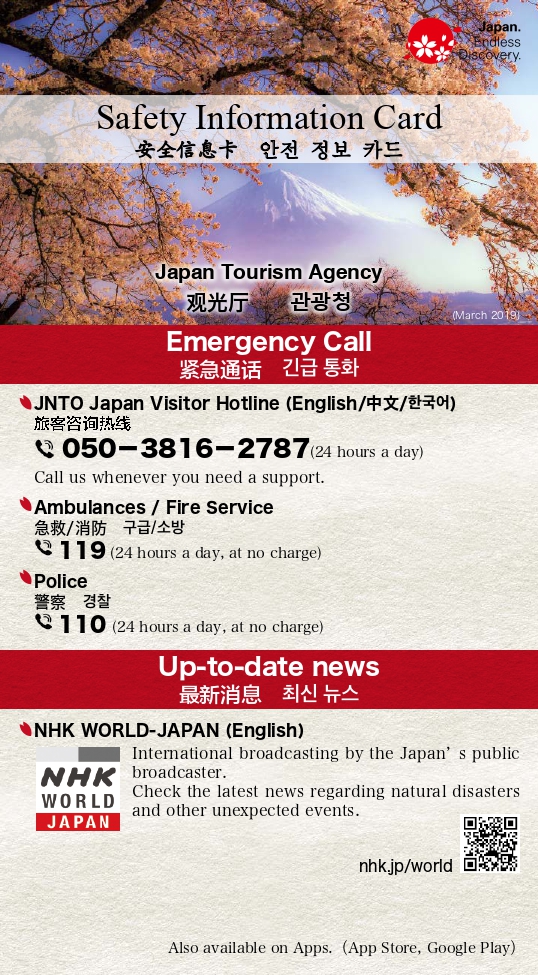
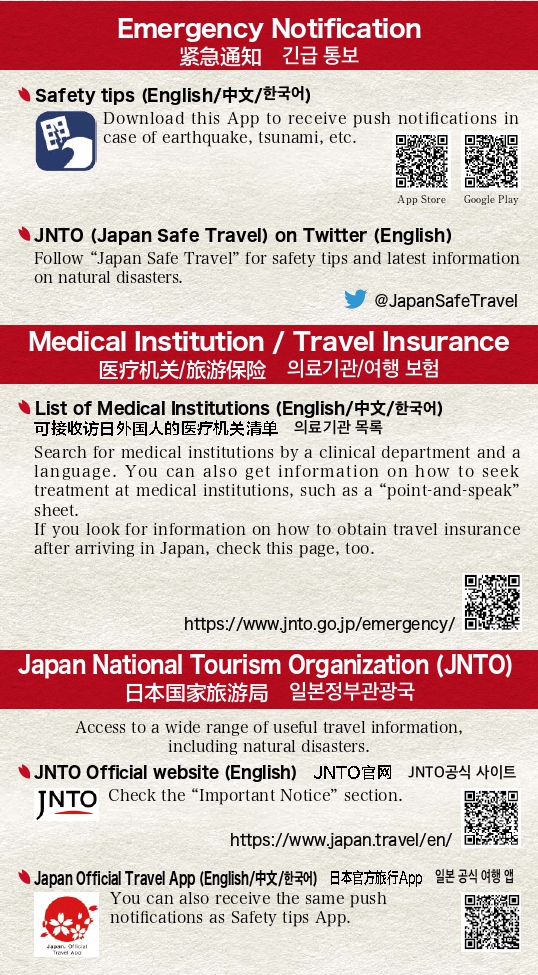
Great the post. I share it on my social networks. Thank you.
How to Being Prepared for a Natural Disaster in Japan?
Hi rani, you can find the answer in this article. If you have any more questions, please contact us directly from the Inquiry Form on our website here: https://www2.tocoo.jp/en/inquiry
I wonder, before the disaster come, is there any a warning alert from government ?
Hi there!
When it comes to dangerous disaster, the Japan Meteorological Agency and the Japanese government provide the alerts.
Also, you will be received a warning alerts via your phone if you use a SIM card from a supported carrier.